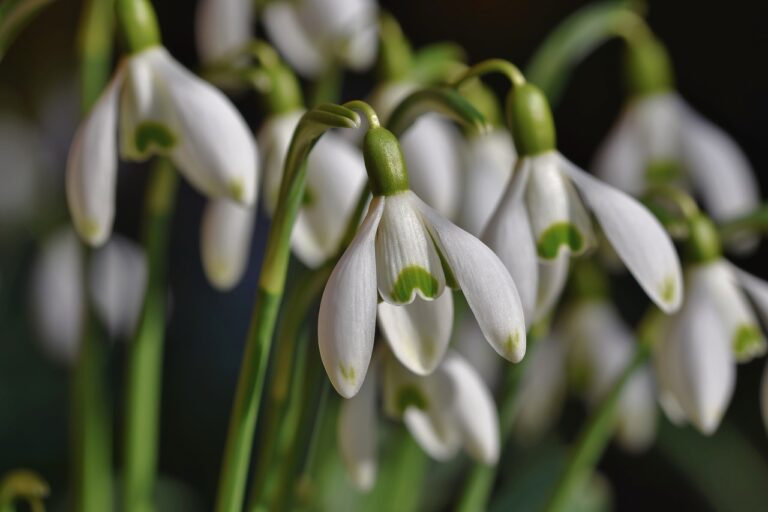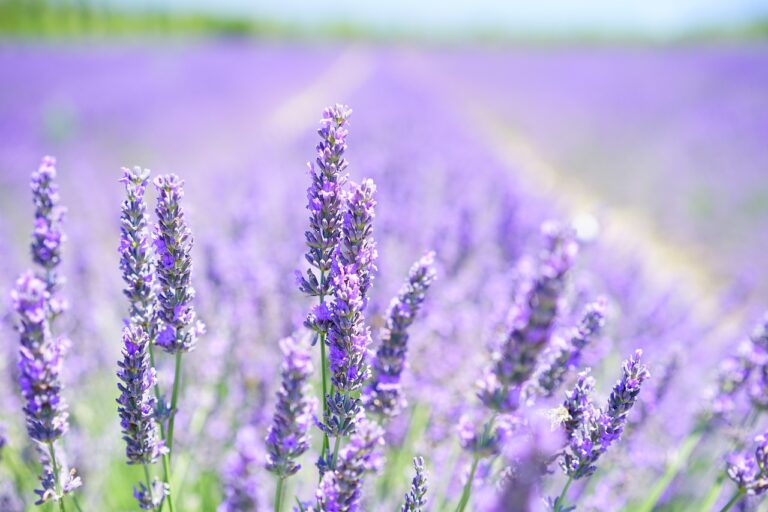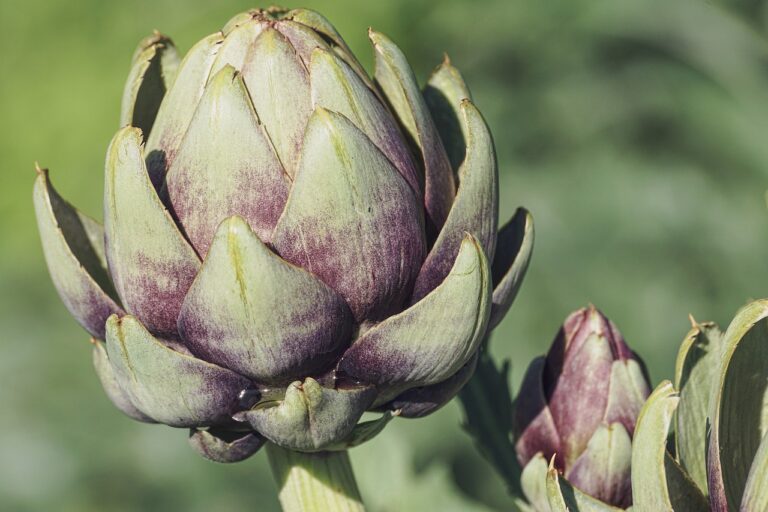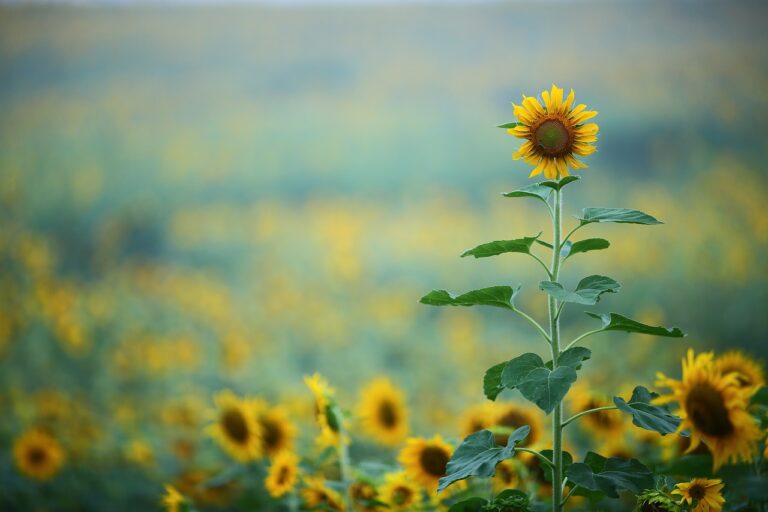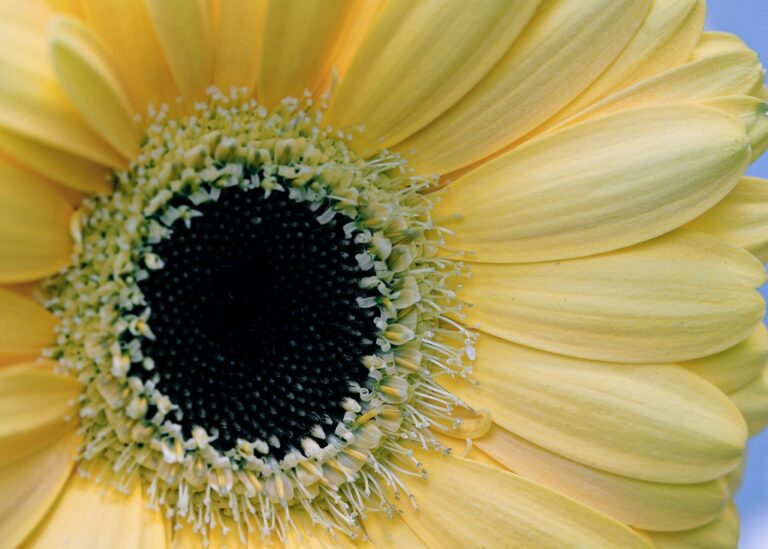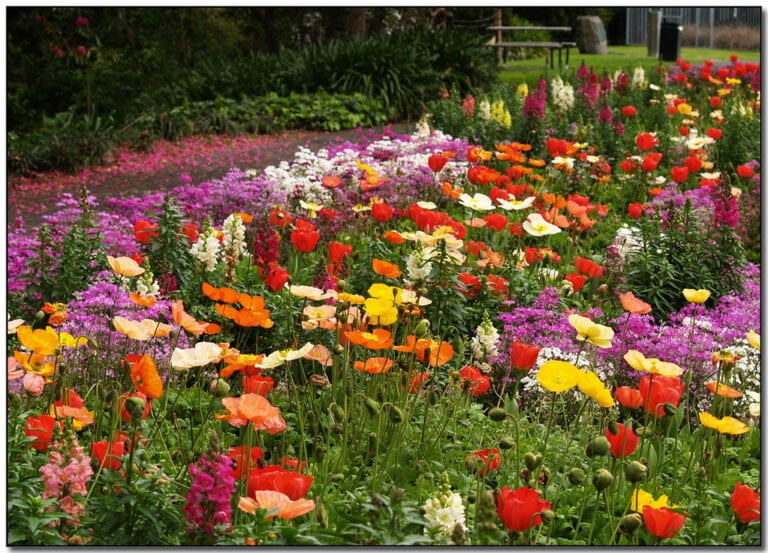Understanding the Different Stages of Lavender Growth
Traversing through the stages of lavender growth is a process brimming with intricacies. From germination requiring adequate soil drainage and cold stratification, to nurturing seedlings with proper moisture levels and light exposure, each phase demands meticulous attention. Focus shifts to establishing robust roots and stems during vegetative growth, while the flowering stage brings forth fragrant blossoms and essential pollination. Dormancy guarantees energy conservation and root strengthening, pivotal for the upcoming season. Each stage of growth contributes distinctively to Lavender’s development. Understanding these phases reveals the secrets to cultivating flourishing lavender plants.
Germination Stage
Lavender seeds typically sprout within 14-30 days after planting in well-draining soil. To improve this process, cold stratification can be employed, which involves exposing the seeds to a period of cold and damp conditions before planting. This treatment mimics the natural conditions that lavender seeds would experience outdoors during winter, breaking seed dormancy and promoting quicker germination.
When the lavender seeds begin to sprout, it marks the start of the growth journey. The emerging seedlings will require careful nurturing for about 2-3 months before they are strong enough for transplanting into the garden. During this time, the seedlings develop their root systems and establish a solid foundation for future growth.
For those looking to propagate lavender through cuttings, the process involves patience. Lavender cuttings can take approximately 3-6 weeks to root successfully before they are ready for transplanting. To expedite this rooting process and encourage faster growth, the use of rooting hormone can be beneficial. This substance aids in the development of roots, ensuring that the cuttings establish themselves effectively in the soil.
Seedling Stage
Entering the seedling stage signifies a pivotal phase in the growth cycle of lavender plants, where careful monitoring and nurturing are essential for successful transplanting later on. Lavender seeds typically take 14-30 days to sprout and progress into the seedling stage, marking the beginning of active growth. During this stage, lavender seedlings require 2-3 months to develop before they are ready for transplanting into the garden.
- Cold Stratification: Implementing cold stratification techniques can hasten seed germination, breaking seed dormancy and promoting healthy seedling development.
- Moisture Levels: Maintaining appropriate moisture levels is crucial for the successful growth of lavender seedlings. Overwatering can lead to root rot, while underwatering can cause stunted growth or even death.
- Light Exposure: Adequate light exposure is essential for the photosynthesis process and overall growth of lavender seedlings. Insufficient light can result in leggy seedlings that are weak and prone to diseases.
- Robust Plants: Successful seedling growth sets the foundation for developing resilient lavender plants. Healthy seedlings are more likely to thrive post-transplanting, producing vibrant blooms and aromatic foliage in the garden.
Monitoring these factors diligently during the seedling stage ensures the development of strong and resilient lavender plants, ready to flourish in their new garden environment.
Vegetative Growth Stage
In the vegetative growth stage of lavender plants, the focus shifts towards establishing a strong foundation through the development of roots, stems, and leaves. This phase is essential for the plant’s overall health and prepares it for subsequent stages, particularly flowering. Lavender allocates a significant amount of energy towards foliage growth and root establishment during this period. Adequate sunlight exposure is crucial as it fuels the process of photosynthesis, enabling the plant to produce the necessary sugars for growth. Well-drained soil is vital to prevent waterlogging, which can lead to root rot and other issues that hinder vegetative development. Proper watering is also vital; lavender prefers slightly dry conditions over being constantly wet.
Stems play a vital role in providing structural support for the plant and transporting nutrients and water throughout its system. Healthy stems contribute to the overall stability and longevity of the lavender. Pruning during the vegetative stage is beneficial as it helps shape the plant, encourages bushier growth, and improves air circulation around the foliage, reducing the risk of diseases. Pruning also redirects the plant’s energy towards essential areas, promoting optimal growth. By focusing on roots, stems, and leaves, the vegetative growth stage sets the foundation for a thriving lavender plant that is well-prepared for the subsequent stages of development.
Flowering Stage
During the blooming stage of lavender plants, the vivid hues of scented blossoms attract essential pollinators to the garden, facilitating the continuation of the plant’s life cycle. Lavender enters this phase typically in the summer months, marking a visually stunning period of growth. Here are some key aspects to contemplate during the blooming stage:
- Fragrant Blossoms: The emergence of delicate lavender flowers in various shades not only adds aesthetic value but also fills the air with a distinct and pleasant aroma.
- Pollinators: Bees and butterflies are drawn to the scented lavender flowers, aiding in pollination and promoting biodiversity in the garden ecosystem.
- Pruning: Proper trimming after blooming is vital to maintain the health of the plant, encourage new growth, and set the stage for future blossoms.
- Harvesting: Harvesting lavender at the right time during the blooming stage is essential to guarantee fragrance and quality for various uses like aromatherapy, culinary purposes, and crafts.
Understanding the blooming stage of lavender is essential for maximizing the benefits of this versatile plant. By appreciating the beauty of its blooms, supporting pollinators, and following proper care techniques such as pruning and harvesting, one can enjoy a thriving lavender garden with abundant fragrant flowers.
Dormancy Stage
As lavender evolves into the dormancy stage, its focus shifts from blooming to conserving energy and strengthening roots, preparing for the colder months ahead. During this period, lavender plants undergo a significant transformation in their growth pattern. Dormancy in lavender is an important phase where the plant slows down its metabolic processes to conserve energy. This conservation of energy allows the plant to withstand the harsh conditions of winter by reducing water loss and nutrient consumption.
One of the primary objectives of the dormancy stage is root development. Lavender plants invest their resources in strengthening and expanding their root systems during this time. The robust root system not only anchors the plant securely in the soil but also aids in better nutrient absorption and water uptake, essential for the plant’s survival during the dormant months.
While in dormancy, lavender ceases to produce new leaves and flowers. Instead, it reallocates its resources towards maintaining its existing structures and preparing for rejuvenation in the upcoming growing season. This period of rest is crucial for lavender plants to recuperate, ensuring healthy growth and abundant blooms when the conditions become favorable again.
Understanding the dormancy stage is important for providing the necessary care and maintenance to support lavender plants through this phase, setting the foundation for vigorous growth and blooming in the future.

